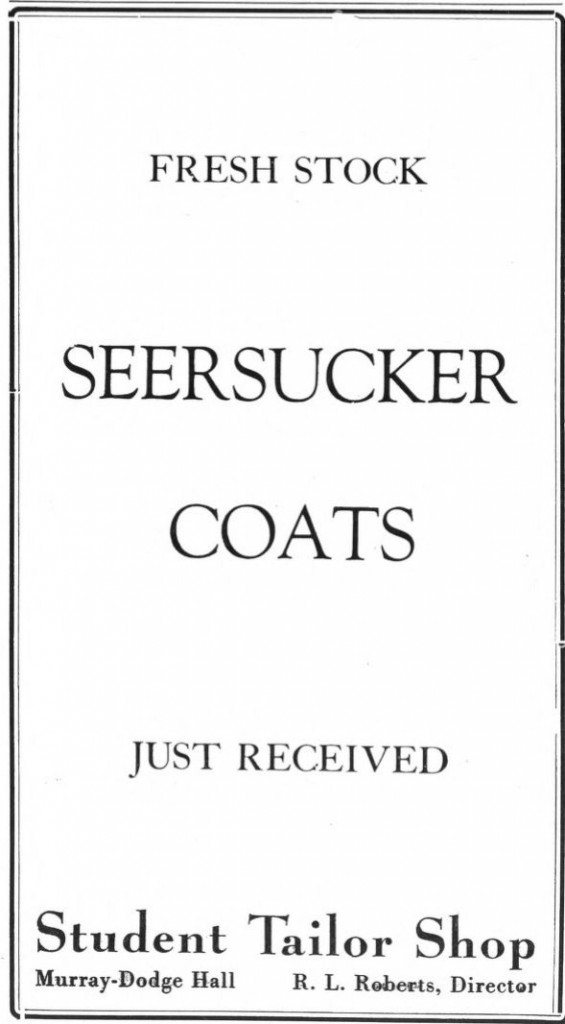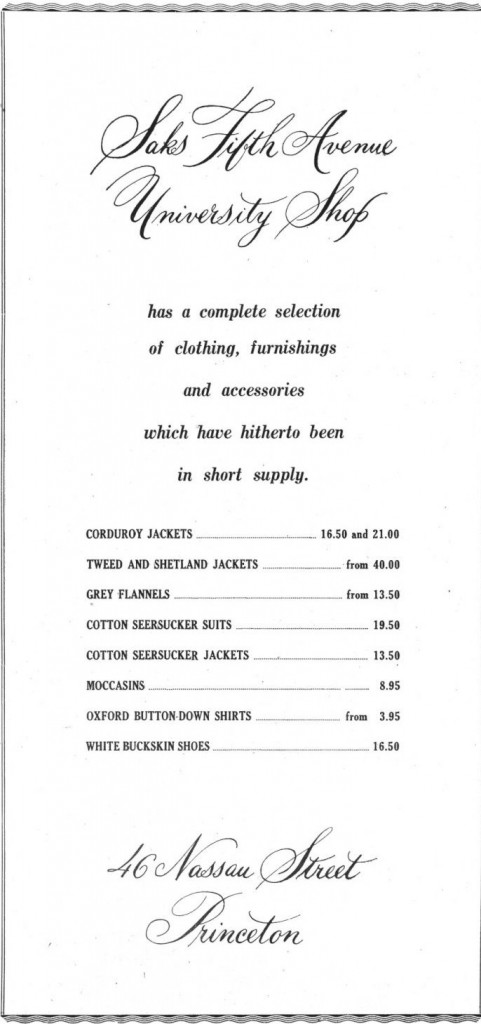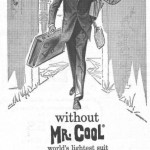
If you were off on Spring Break or spending the winter in Palm Beach, Princeton’s clothiers of the 1940s had just the clothes you needed, including plenty of seersucker. While not graphically interesting, these ads include interesting copy revealing what was popular with students at the time.

















What’s the date of the Rosenberg ad?
1942 and 1941
Based on these prices, a seersucker from Press, adjusted for inflation, would cost about $250.00 today.
Rosenberg’s, a New haven tailor (where I bought my first suit and where my father had his Navy Officer’s uniforms tailored when he was called up again for the Korean war) apparently had a shop near Old Nassau during the Big One. They were in NYC too. I remember it from the embroidered labels.
$ 250.00!! Suits and coats costing less back then..and generally were of better quality.
This baffles me.
This is a really good question, isn’t it? How and why did (better) retail (clothing) become so expensive? When the markup on a jacket or suit is four or five times wholesale, something has gone wrong.
A confession of sorts is that I can’t make myself pay full retail for much of anything, especially clothes. If a person makes the effort and tries to learn, there are ways around it. Sales, for sure. But there are good tailors who deal honestly with customers, and, well, one can go directly to the mills for the good cloth. The days of Huddersfield woolens and Scottish homespun tweeds retaining a mysterious aura that only the sartorial gurus at Brooks and the New Haven spin-offs can illuminate are long gone.
If the shops that advertise on Ivy-Style.com relied upon people like me, they’d go out of business in a matter of days.
“Hitherto” in ad copy for a clothes sale — love that.
“This is a really good question, isn’t it? How and why did (better) retail (clothing) become so expensive? When the markup on a jacket or suit is four or five times wholesale, something has gone wrong”.
I think that cost of work incresed at some point (70s?) and this is because clothing industries began to relocate in other countries.
Taxes maybe are another reason.
But i think that the main reason is especially excessive greed (also consider that often the expensive clothing ( of questionable quality) are make in poor countries in sweatshops).
Considering that the average car cost $850 in 1940 and $1500 in 1950, I blame Keynesian economics and the continuation of currency devaluation.
Most retail pricing is “keystone”, twice wholesale cost.
Carmelo has it nailed: Cost of work. Labor used to be cheaper than materials, not just in clothing, but in many lines of goods.
They will charge as much as the market will bear.
The pictures appear to be blocked to me. I’m using Safari on the latest Mac OS.
Although the above prices seem reasonable, the clothes would be out of reach to most Americans. My grandfather regaled me with stories (early 1900’s) that he earned .04 an hour, 10 hour days. My Dad worked in a steel mill before he was drafted into WW2, earning $5 a day. Mom worked WW2 as a bookkeeper, earning $14 a week.
At $25 a week, Dad could not afford the furnishings of the retailers above, just as now, men making $20 per hour before taxes can’t afford J. Press, or Brook Brothers clothing. The working men of today, like yesterday, would have to buy cheaper. (Maybe, that’s one reason, we’re living in slob nation.)
BUT, of course, we’re not talking about the working class. Most of the boys that the above ads were aimed were most privileged. They really didn’t have to worry about money.
A distant uncle once told me, he ate peanut butter and crackers regularly and worked to support himself during his early 1930’s undergraduate education. Somehow, he went on to Yale, for his MA and Phd. He spent WW2 working on the Manhattan Project, then on to Eastman Kodak as a chemist, retiring as a VP in some division. He was a millionaire, but the kind of guy who had his sport coat and shirt collars reversed and repaired.
He drove his Ford sedan until the back bumper fell off.
Not an ideal Press or BB customer.
Stay healthy, gents.
Bear in mind, too, that the above merchants were in it for the long haul, for generations. Reasonable value-for-dollar prices, decent profit, comfortable income, great repeat business.
They probably wouldn’t even understand the idea of jacking profits for several quarters in order to sell out and move on to another “acquisition target”.
Amazing how many quality clothiers that such a small town as Princeton had. I suppose they supplemented or supported themselves through road shows. If that is the case, a Princeton HQ address would certainly be the calling card to prove Ivy cred.